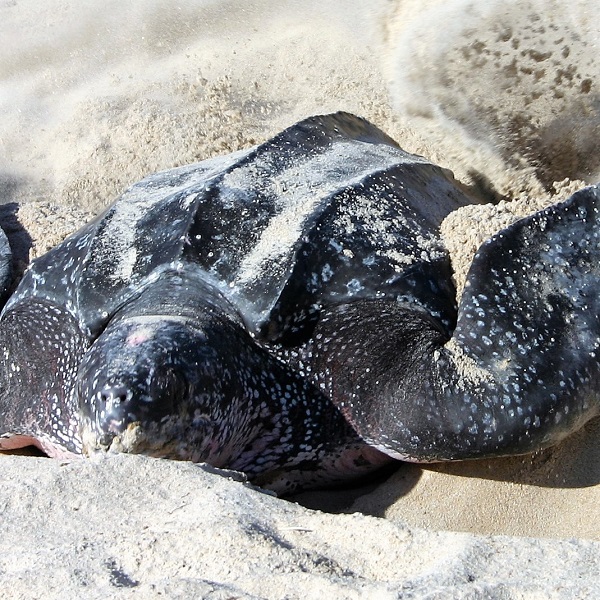
Springtime is an active time for wildlife in Florida, with sea turtles beginning to nest on beaches, manatees leaving their warm-water winter refuges and gopher tortoises starting to stir outside their burrows.
With warmer weather, a variety of species around the state are following their internal biological clocks that tell them to move, mate, feed and nest. These species include black bears and their cubs, nesting waterbirds and snakes.
Because of heightened wildlife activity in springtime, people are more likely to see and encounter all kinds of animals, both adults and their young. Florida’s residents and visitors can help by being aware of how to avoid disturbing wildlife during the rites of spring.
“Viewing wildlife is one of the pleasures of being outdoors during spring,” said Kipp Frohlich, who leads the Division of Habitat and Species Conservation at the Florida Fish and Wildlife Conservation Commission (FWC). “It helps if kids and adults know the importance of not disturbing wildlife. Keep your distance, so you don’t startle a sea turtle, gopher tortoise, manatee or nesting bird that you happen to see during your outdoor adventures.”
Tips on how to enjoy and help conserve Florida wildlife during spring:
- Sea turtles – Help sea turtles by keeping beaches dark at night and free of obstacles during their March–October nesting season. Bright artificial lighting can disturb nesting sea turtles and disorient hatchlings, so avoid using flashlights or cellphones on the beach at night. Turning out lights or closing curtains and shades in buildings along the beach after dark also will ensure nesting turtles aren’t disturbed as they come ashore and hatchlings won’t become disoriented when they emerge. Clear away boats and beach furniture at the end of the day and fill in holes in the sand that could entrap turtles.
- Manatees – Look out for manatees when boating. Chances of close encounters between manatees and boaters increase in the spring, as manatees leave their winter use areas and travel the intracoastal waterways along the Atlantic and Gulf coasts and other inland waters. For boaters, it is a critical time to be on the lookout for manatees to avoid collisions with these large aquatic mammals. Boaters should follow posted speed limits as many areas have seasonal zones in spring that reflect manatee migration patterns.
- Gopher tortoises – Spring days are a good time to spot a gopher tortoise, as Florida’s only native tortoise becomes more active, foraging for food and searching for a mate. If you see gopher tortoises or their half-moon shaped burrow entrances, it is best to leave them alone. You can help a gopher tortoise cross a road by picking it up and placing it in a safe location along the roadside in the direction it was heading. But only do this if it is safe for you to do so, and Remember the tortoise is a land animal, so never attempt to put it into water.
- Nesting birds – Keep your distance from birds on the beach or on the water. If birds become agitated or leave their nests, you are too close. Disturbance can cause birds to abandon their nesting sites, which exposes their eggs and chicks to predators, sun exposure and other harm. Because shorebirds and seabirds build well-camouflaged shallow nests out of sand and shells on beaches, their nests, eggs and chicks are vulnerable to being stepped on unless people look out for them. Wading birds, such as herons and egrets, and pelicans also are nesting now on mangroves and tree islands.
- Bears – As spring temperatures warm, bears become more active, increasing the opportunities for conflicts with people. Don’t give bears a reason to stay in your neighborhood. Remove anything that might attract bears, such as unsecured garbage or pet food. If they can’t find food, they’ll move on.
- Snakes – Watch out for snakes in your yard or when hiking. What should you do when you come upon a snake? Just stand back and observe it. Snakes don’t purposefully position themselves to frighten people. They’d much rather avoid encounters and usually will flee.
- Injured and orphaned wildlife – If you find a baby animal, it is best to leave it alone. Baby animals rarely are orphaned; a parent may be nearby searching for food or observing its young. Instead, report wildlife you think may be injured or orphaned to the nearest FWC Regional Office.
It’s illegal to disturb or harm wildlife, so if you see someone not following the rules – or spot an animal in distress – call the FWC’s Wildlife Alert Hotline: 888-404-FWCC (3922) or #FWC or *FWC on a cell phone.
Learn more about where and how to view wildlife at MyFWC.com/viewing.































